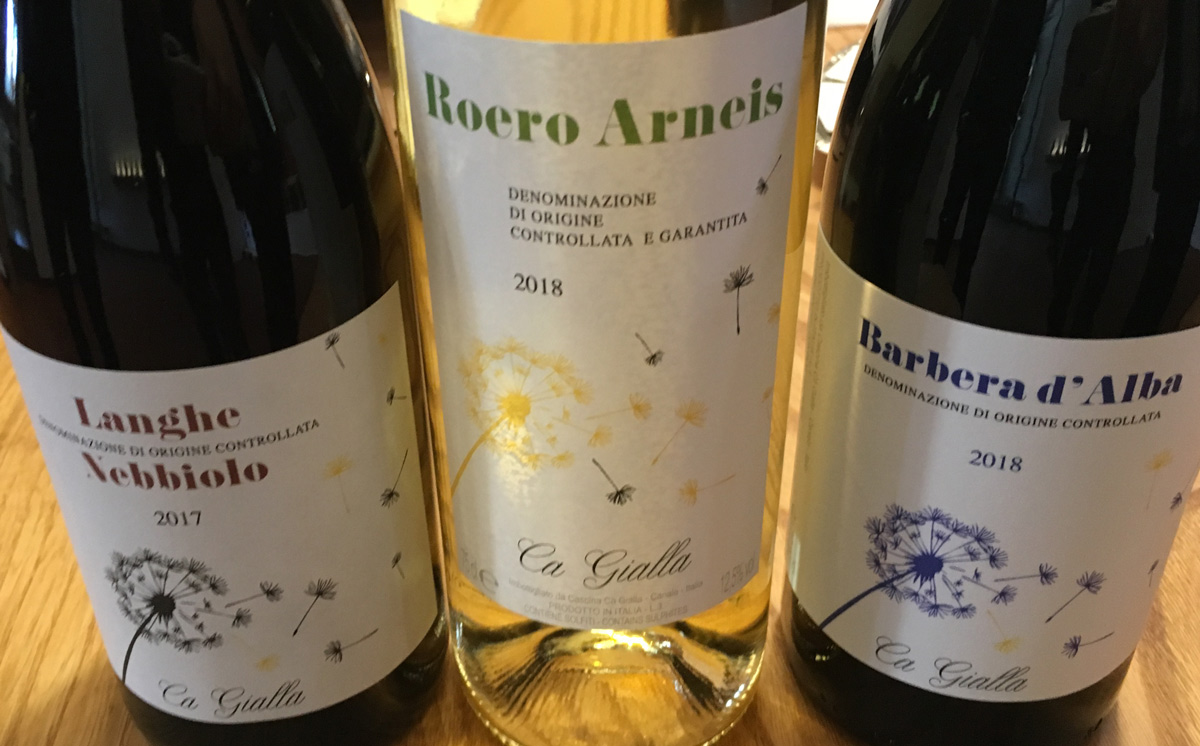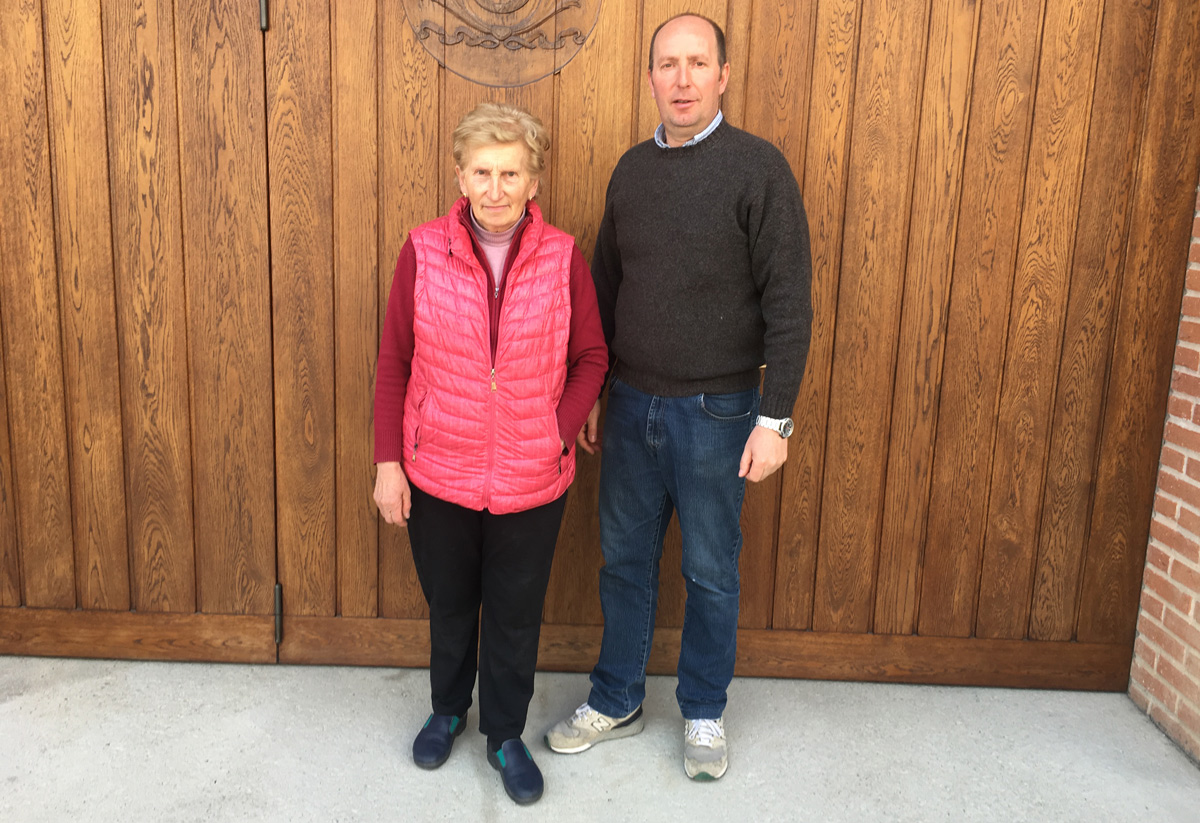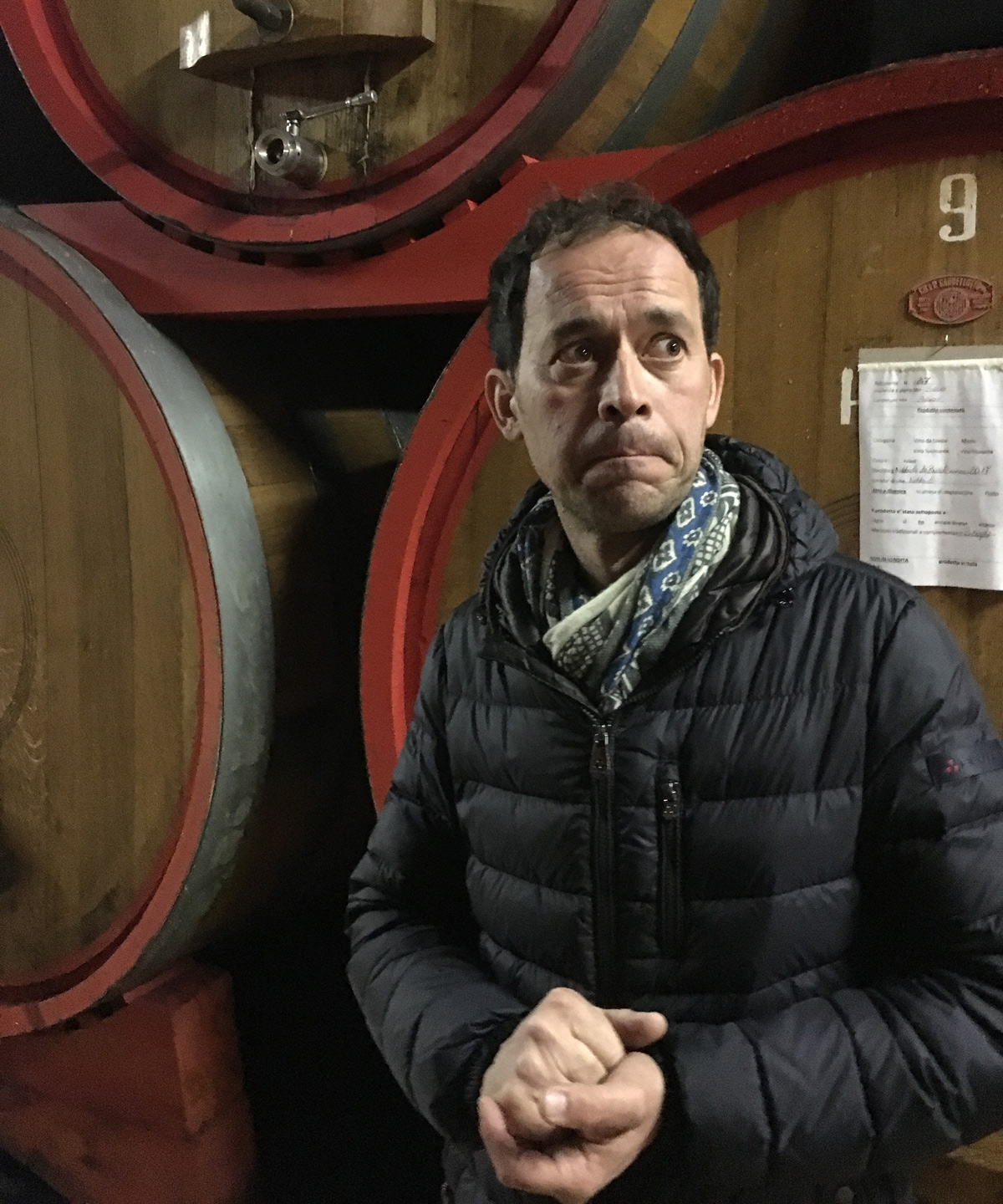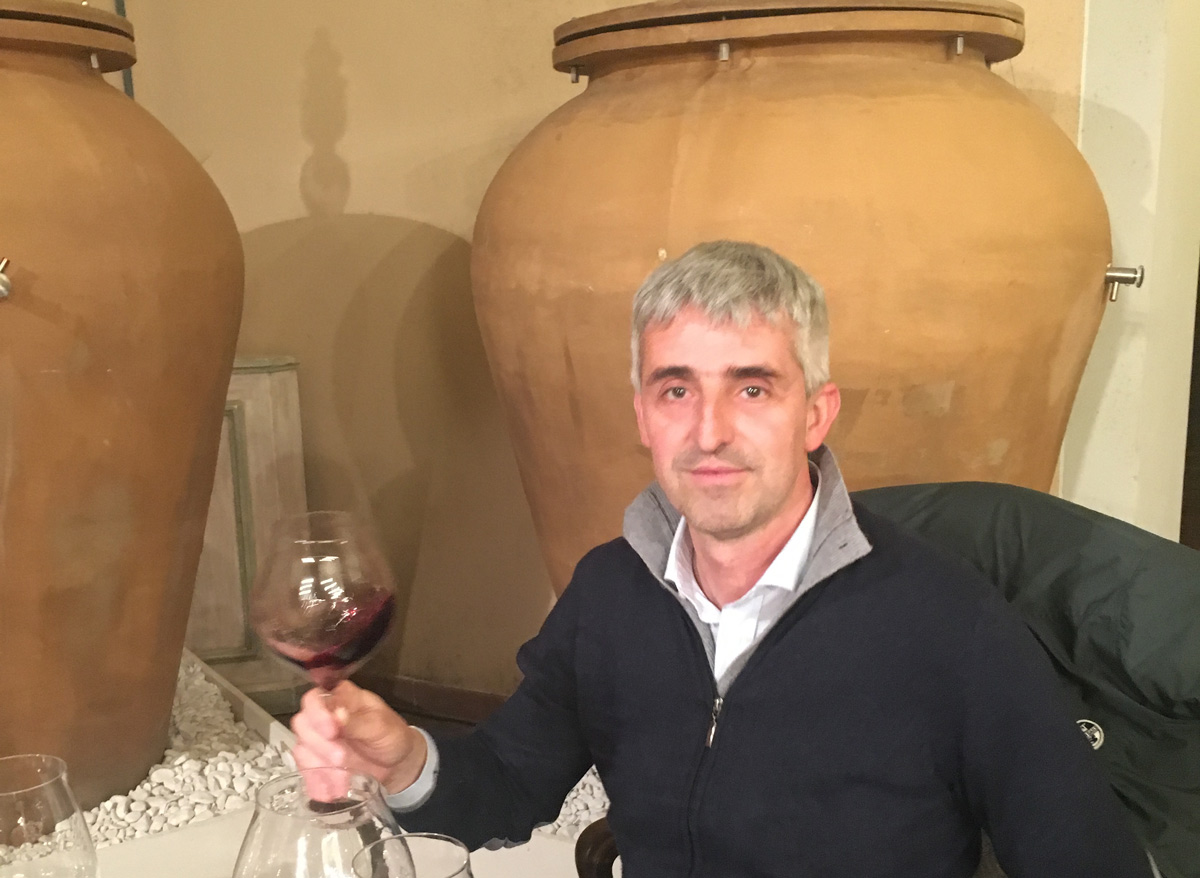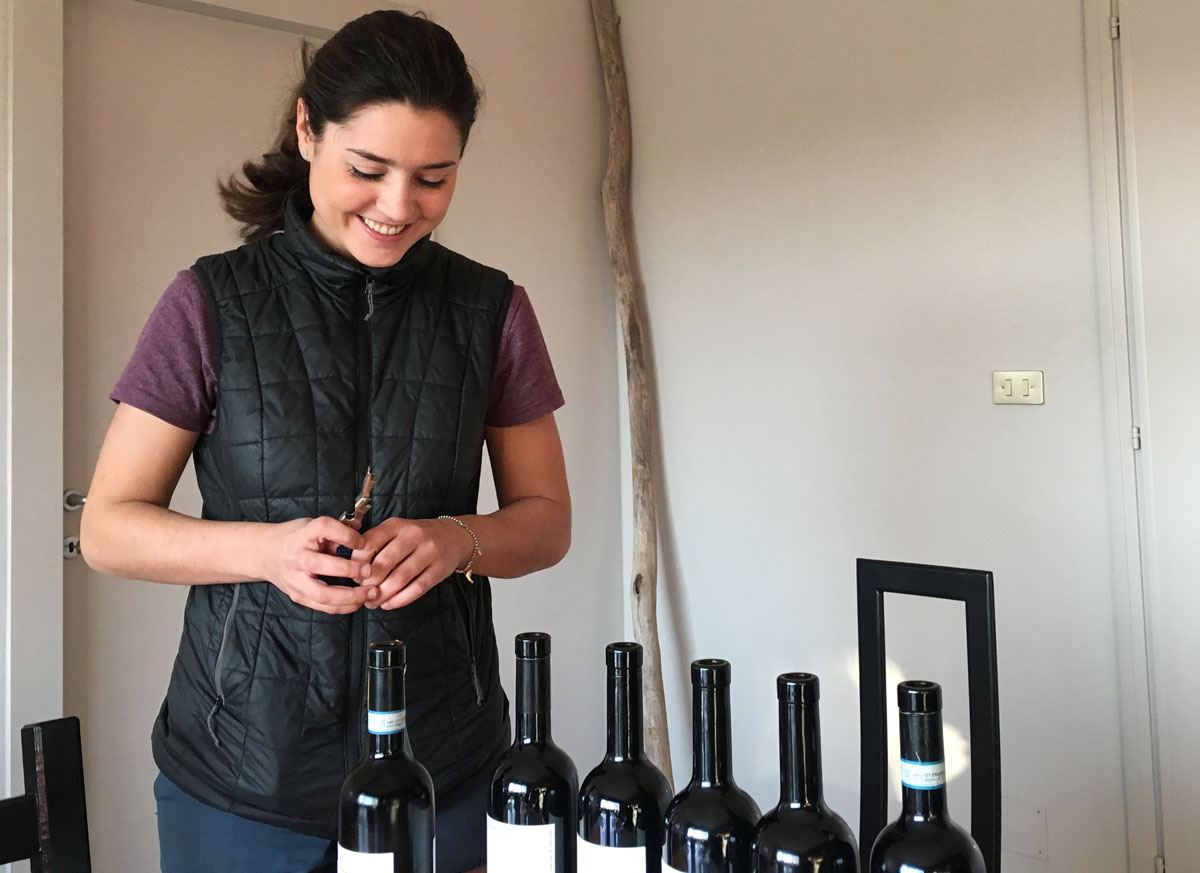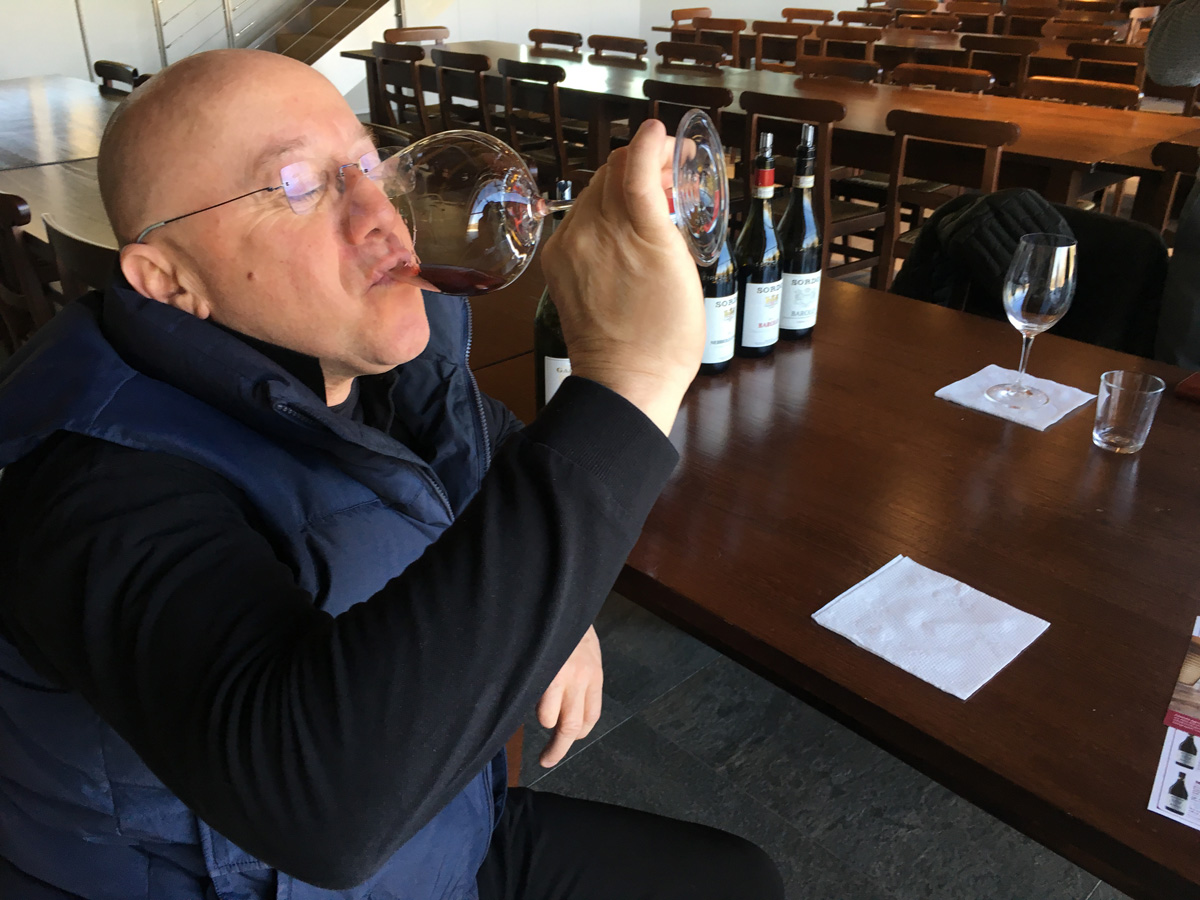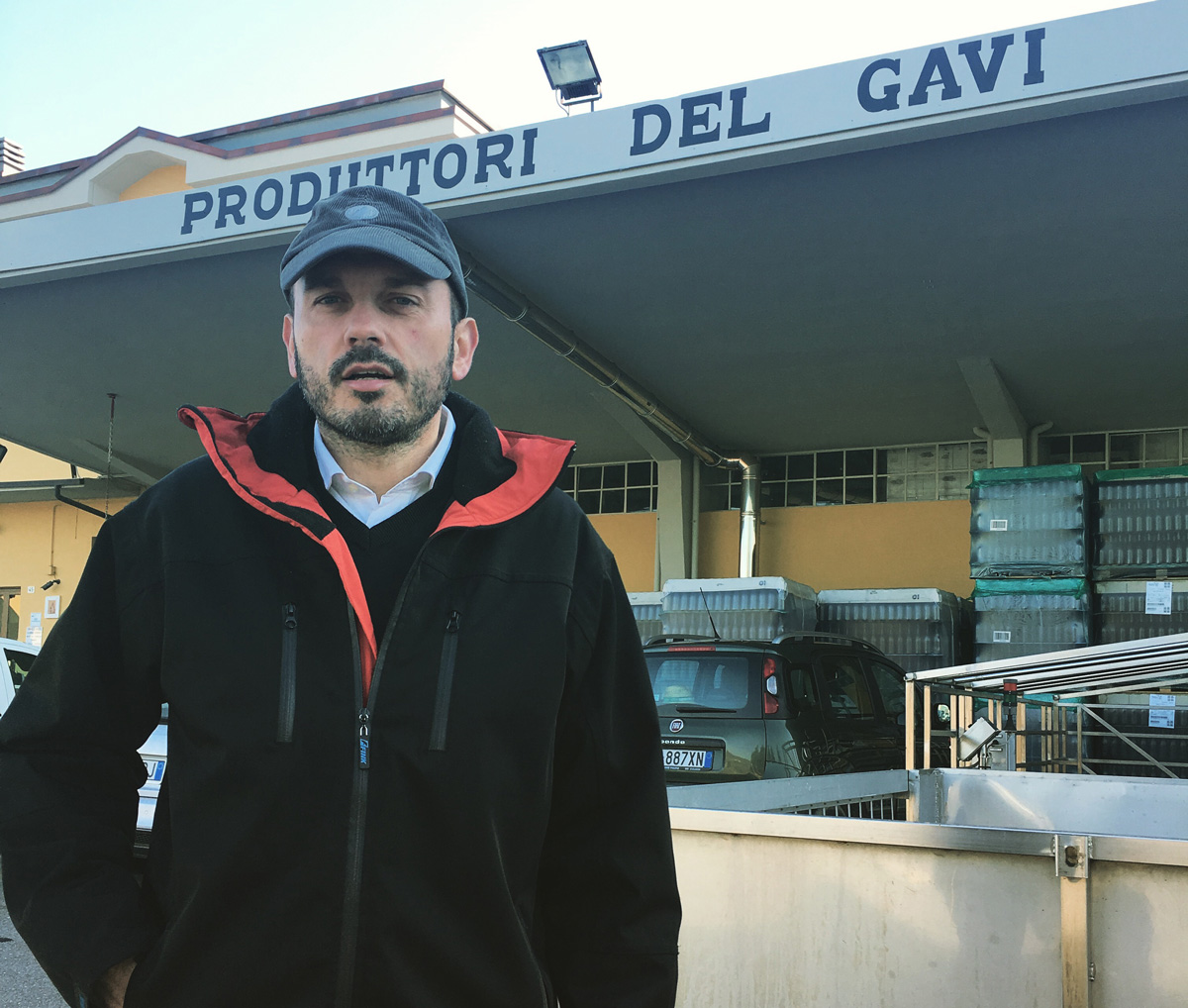You won’t find Sorelle de Nicola Feyles on a map, and certainly not through Google. Booking an appointment to see Feyles takes some local connections, in this case through a Gavi-based colleague of ours. The process goes like this – You reach out to proprietor Antonio de Nicola with a letter, you don’t hear back for a month, and the day of the visit you scratch your head, bummed, until the proprietor of a local hotel calls your mobile advising on a “meeting address,” in this case a parking lot at the end of the village, suggesting that Antonio is waiting outside in a car to lead you to his home and winery. Over the years we’ve heard the anecdotes about the legendary Feyles, we find Antonio in an old VW, and the tension builds…
Upon driving through the “gates” of Feyles things get spooky – Not in a bad way, but in a manner that suggests you’ve entered a different dimension in time. Hitchcockian. The story has it that this compound served as a slaughterhouse in days gone by. You wouldn’t guess so now, as there are probably sixty concrete vats scattered outside, of various shapes and sizes, all well-weathered, under a tin roof with thousands of rust holes that pepper the place with pin-sized, almost star-like beams of sunlight. Things are plenty messy but not what we’d call “dirty.” Walk inside a small building to the left and you are greeted with a humble but modern bottling line, shiny and clean to Thomas Keller standards, and somewhat inexplicably you run into four massive, fairly new, Slavonian oak casks.
Antonio himself has enviable energy for a man in his mid-eighties. They say intention brings longeivity, and Antiono has single handedly taken care of all the estate’s winemaking for the last 56 years. With Antonio and what he is doing at Feyles, we are looking at an estate in its prime. There does seem to be some succession plan in place here – Antonio tells us he has a son living in Paris. Is it our duty to put Feyles on the “map” so to speak?
Vinification is totally non-interventionist with a minimum use of sulphur. The wines mostly finish fermentation with some residual sugar, which is “eaten up” during aging which takes place in Nicolas’ outdoor graveyard of small, very weathered, pre-war concrete tanks. All wines are aged before bottling for 5 years with the exception of Dolcetto and Barbera. It goes without saying that we found no evidence of “climate control” anywhere, and shockingly, no evidence of volatile acidity either. All wines are bottled unfiltered and taken to a protected environment for further aging.
The young wines are not so different from the old ones, nor are they much more colored, all oxidation almost certainly comes during alcoholic fermentation, which goes on for years in some cases – One of his two vats of 2014 Barbaresco must have still had what our palates estimate ten grams of residual sugar in it, and when questioned Antonio shrugged implying that fermentation would commence again this summer after he racks it to tank, and that like everything else through the years here this Barbaresco would finish dry. After tank aging the wines are then kept some five years in bottle. We received no clear answer to our question as to why. For Frank and I the over-the-top aging in bottle does not add all that much, but it is of course joyous to come across this ability to pick up and offer you ten year old Barolo and Barbaresco as “current release” material.
Antonio produces two Baroli, both Cru bottlings from six acre plots – Perno in Monforte and Sottocastello in Novello, with an indication of the specific plot within each Cru. The same holds true for Barbaresco – Five acres of holdings, from plots in Montesommo and Borgese, both in Neive. His outstanding Langhe Nebbiolo is actually a second wine made from declassified fruit in the Barolo and Barbaresco vineyards. Vinification and aging of Barbera and Dolcetto comes more quickly, as you’ll see with the below release dates, and these wines come from the same part of Perno as the Barolo.
Collectively Frank and I have visited many wineries over the years, and have never witnessed such natural winemaking, not even at the most hipster of locales, and the most shocking bit is that there were zero flaws in anything we tasted. The overall shock factor of this visit takes me back to the first time I tasted wines made by Frank Cornelissen, and while to this day tasting Cornelissen remains one of the more interesting vinous experiences one can enjoy, diving into Feyles you trade “interesting” for silky, almost ethereal palate pleasure. Simply put, I’m at a loss for words. Everything about Feyles goes against all logic.
Sorelle de Nicola Feyles ’17 Barbera d’Alba Superiore, dark, fine classy
Sorelle de Nicola Feyles ’17 Dolcetto d’Alba Superiore, typical in an elegant style, balanced
Sorelle de Nicola Feyles ’09 Langhe Nebbiolo, nearly mature, very fine
Sorelle de Nicola Feyles ’08 Barbaresco Riserva Montesommo, typical red./brown/orange color, complex nose, dry “Barbaresco” tannins, ready to drink for many years to come
Sorelle de Nicola Feyles ’08 Barolo Perno, darker, softer, but still quite powerful, a little easier than the Barbaresco, ready as above
We tasted ‘10 Barolo and Barbaresco from concrete vat, they showed similar to the ’08’s but with a bit more power.
Additionally we tasted two separate casks of ’14 Barbaresco Riserva Montesommo, the fist being quite dark, concentrated, just outstanding, and the other similarly rich but with noticeable sugar still remaining.
Assorted ’13’s from vat were similar, but less developed as expected.
These wines are for experienced palates, or for those who are curious…
You can expect these to arrive in early Summer.
